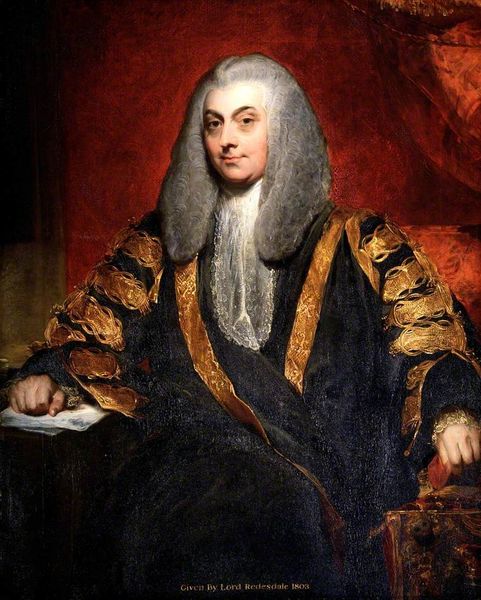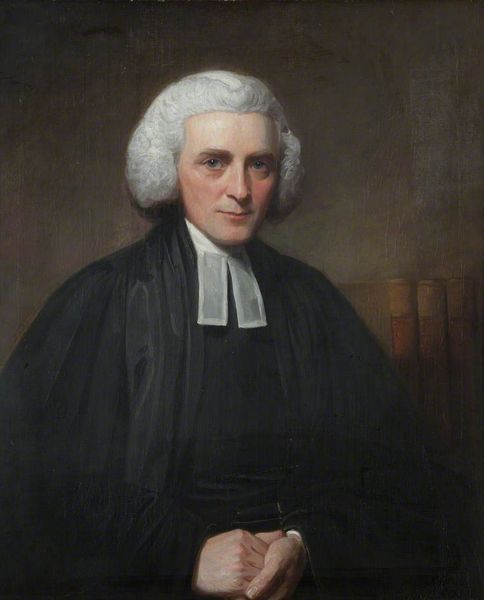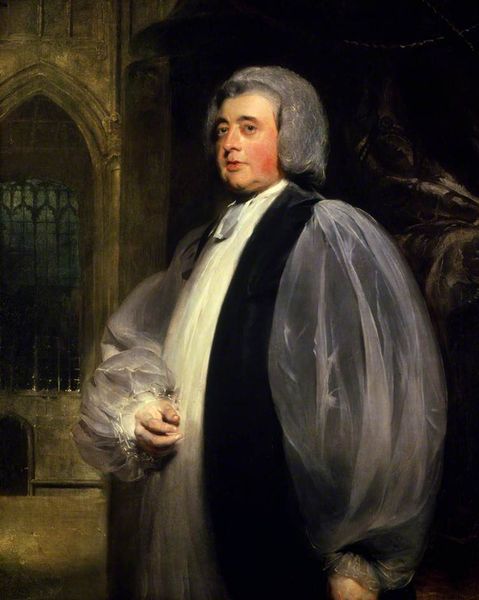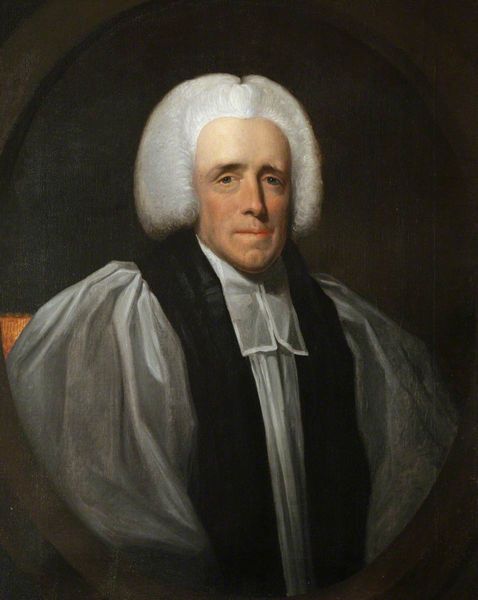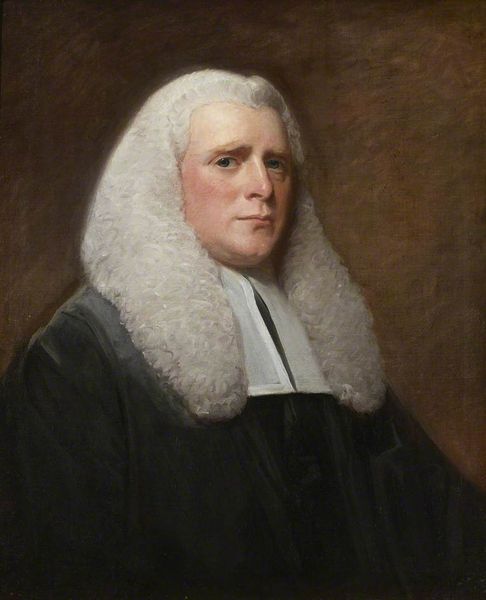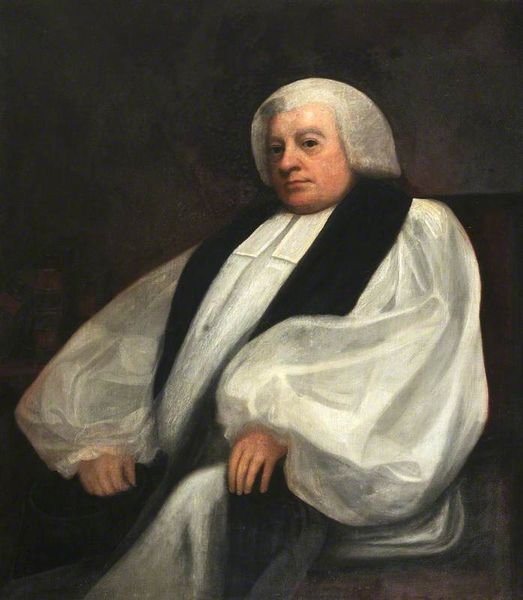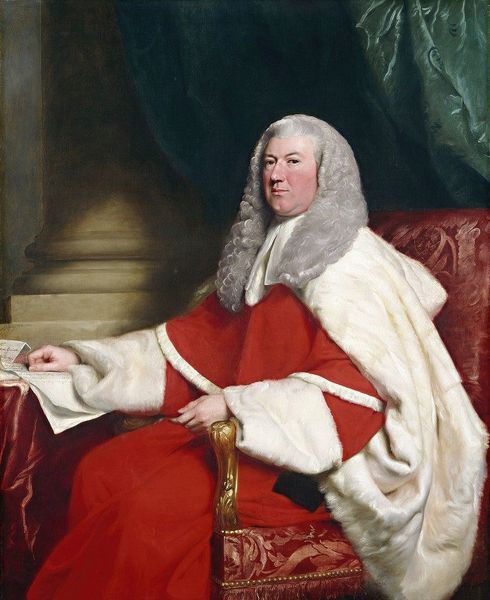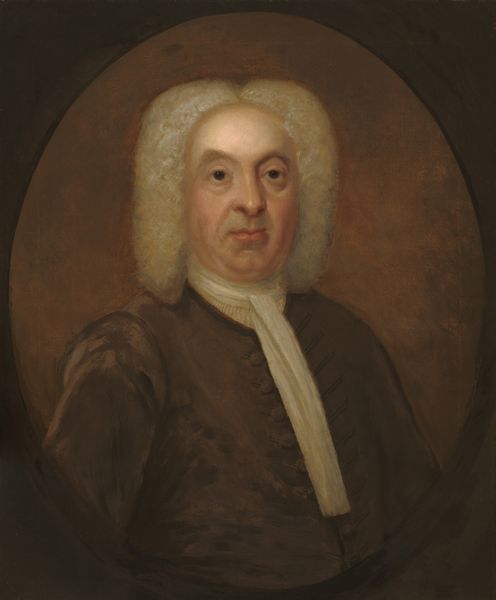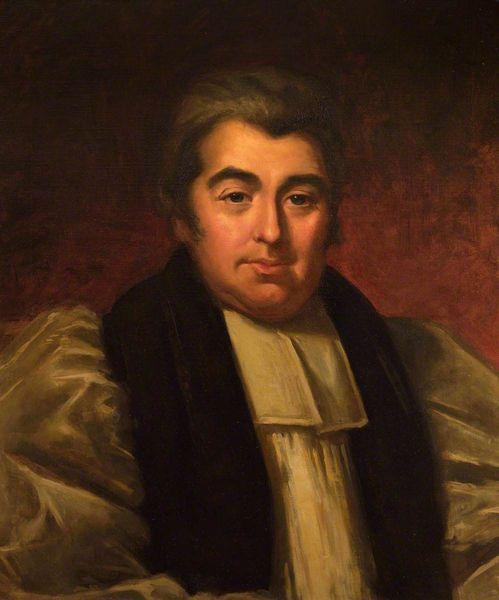
Copyright: Public domain
Curator: I find myself drawn to the dramatic tension present in this portrait; it has an imposing, almost theatrical air. Editor: That’s certainly evident. Here we have George Romney’s 1783 portrait of John Moore, then Archbishop of Canterbury. Note the skillful oil paint application, how it builds form and texture. But let’s consider its production context. Romney was a highly sought-after portraitist among the British elite. Commissions such as these sustained his studio. Curator: The artist's confident brushwork is clearly baroque in its flamboyance; how does Romney's process engage with, or perhaps challenge, that tradition? The composition seems calculated to project power. Editor: In many ways, Romney's artistic choices align with the expectations of the elite. Portraiture served to reinforce social hierarchies. The vestments themselves, clearly signifying religious authority and crafted with meticulous care, speak volumes. We need to see this as a produced object that reflects those values. Curator: You make an excellent point; however, notice the softness of Moore's expression compared to the stark lines of his robes. Semiotically, we can read a certain ambiguity, maybe an indication of Romney’s insight into the Archbishop’s human qualities? It sets a marvelous visual dichotomy! Editor: I’d argue any nuance there is also deliberately managed, to soften power’s image for broader appeal and reinforce faith in the establishment. Still, this kind of visual dialogue is fascinating in a period when the church's influence faced questions about authority. Who exactly benefits from these portrayals, and whose interests do they serve? That remains vital. Curator: An astute question. Considering all factors, I'd argue the painting functions both as a record of an individual, an Archbishop— and as a strategic reflection of the period. Editor: Precisely. And the production context underscores this reading and shapes what we think of the piece today. I appreciate how the labor, material and function here gives us further historical reflection.
Comments
No comments
Be the first to comment and join the conversation on the ultimate creative platform.

